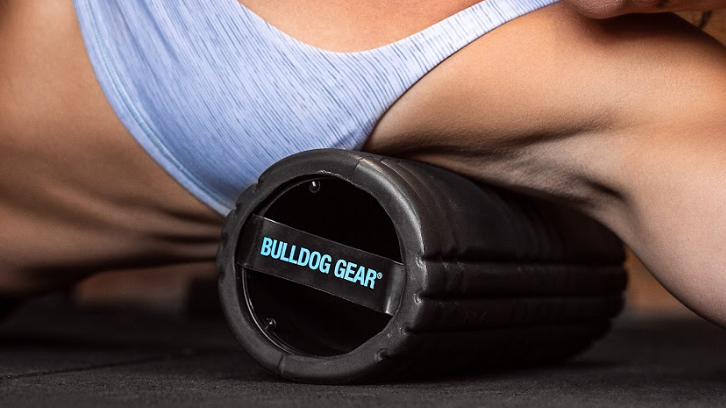|
19/07/2022 | Andrew Tracey Andrew Tracey is a long time collaborator with Bulldog Gear. A coach, writer and current fitness editor of Men’s Health Magazine, he has been in and around the fitness industry for the past 16 years. Having enjoyed and endured a number of disciplines from endurance racing, to strongman, to Crossfit AT enjoys getting neck deep in the practice just as much as the theory. |
‘It’s completely unsafe for your knees to travel over your toes!’
Is medical advice that’s about as ‘up to date’ as leeches, 'medicinal cocaine' and drilling holes into your brain to fix headaches.
As an instant rebuttal to the idea that the movement is somewhat 'unnatural', all you need do is to count how many times your knees naturally track over your toes throughout the day- from climbing stairs, to standing up and sitting down from chairs; even sitting on the toilet. In fact, pay careful attention to how difficult it would be to go about your day-to-day life without your knees drifting over the apocryphal ‘death zone’ some people would have you believe the toes constitute, and you’ll soon be wondering how intelligent it is not to train in this range of motion.
There is truth to the fact that as your knees track forward, especially under load, the amount of torque (a fancy physics word for ‘force’, specifically rotational force) around your knee joint increases, this is just a quirk of basic physics. But just like any other position, movement or part of the body- gradual exposure, appropriate loading and steadily increasing volume will add strength and dexterity to the area- a far cry from ‘dangerous’.
To some some extent it could be be argued (and this is a hill I will happily die on), that avoiding positions in training that we may one day find ourselves in, inadvertently, in everyday life, goes against the idea of ‘training’ altogether. After all, what are we training for if not to improve the quality of our lives. And one of the quickest ways to ensure a better quality of life? Hedge your bet against injury.
If you’ve ever experienced acute knee pain after new activity or stressors, it’s probably as a result of the sudden uptick in volume, a new stimulus the your body hasn’t encountered before, or just plain old fashion hubris on your account. Far from a sign that you should avoid (fully) bending the knee altogether, it could be a wake up call to start carefully and diligently spending some more time in that position, shoring up any weak links and creating healthy, stable joint.
Here are three movements you can include right now to start futureproofing those joints.
1. Reverse Sled Drags
Smoking your quads, glutes, grip and upper back whilst delivering a hefty blow to your core as you work to maintain an upright position. Reverse drags are the perfect solution for trainees suffering with or recovering from knee injuries who are looking to add mass to their quads.
You begin on the balls of your feet, knees firmly over toes, and end each step in ‘terminal knee extension’, locking out your legs and fully flexing the muscles of the quadriceps, but without the heavy, top down loading usually associated with movements such as squats or leg extensions.
Try a moderate weight for sets of 20-30m, or use as ‘drag back’ after a forward push variation.
2. ATG Split Squat
A movement literally designed with the intention of driving the knees as far over the toes as possible: building mobility and delivering precious blood to the tendons and ligaments of the knee, an area that otherwise has very poor bloody supply. The ATG split squat is also a tour de force for improving ‘dorsiflexion’ (the flexibility of your ankle joint, and subsequently the suppleness of the calf muscles), mobility of hip and building a stronger, more durable set of knees.
The movement is simple in design, take the longest step forward possible, dropping into a lunge/ split squat position. Next, shift your bodyweight forward, pushing your leading leg forward- your knee moving as far over your toes as your mobility allows (don’t be afraid to come up onto your toes, or use a slanted/angled board to help you here). Keep your back leg as straight as possible, pause in this end range for a second before extending at the knee, under control, into the top of the split squat position.
Aim for 5-10 perfect bodyweight reps on each leg, before adding load.
3. Sissy Squat
A bodyweight movement so classic that even old-school bodybuilders called it old-school. The sissy squat (named as an homage to Sisyphus, definitely not as a commentary on the type of trainee who performs them), use leverage to put some serious emphasis on the quads, builds core strength and balance and is a god-tier exercises for strengthening the knees, if used progressively, correctly and diligently.
Stand with your feet shoulder-width apart, heels raised on a plate putting your weight through the balls of your feet. Use a rack or wall to support you. Bend at the knees and lean backwards, creating a strong, rigid line from your knees to your head. Lower your knees as close to the ground as possible before standing back up.
Build up gently with this one, one perfect rep is GOOD.



